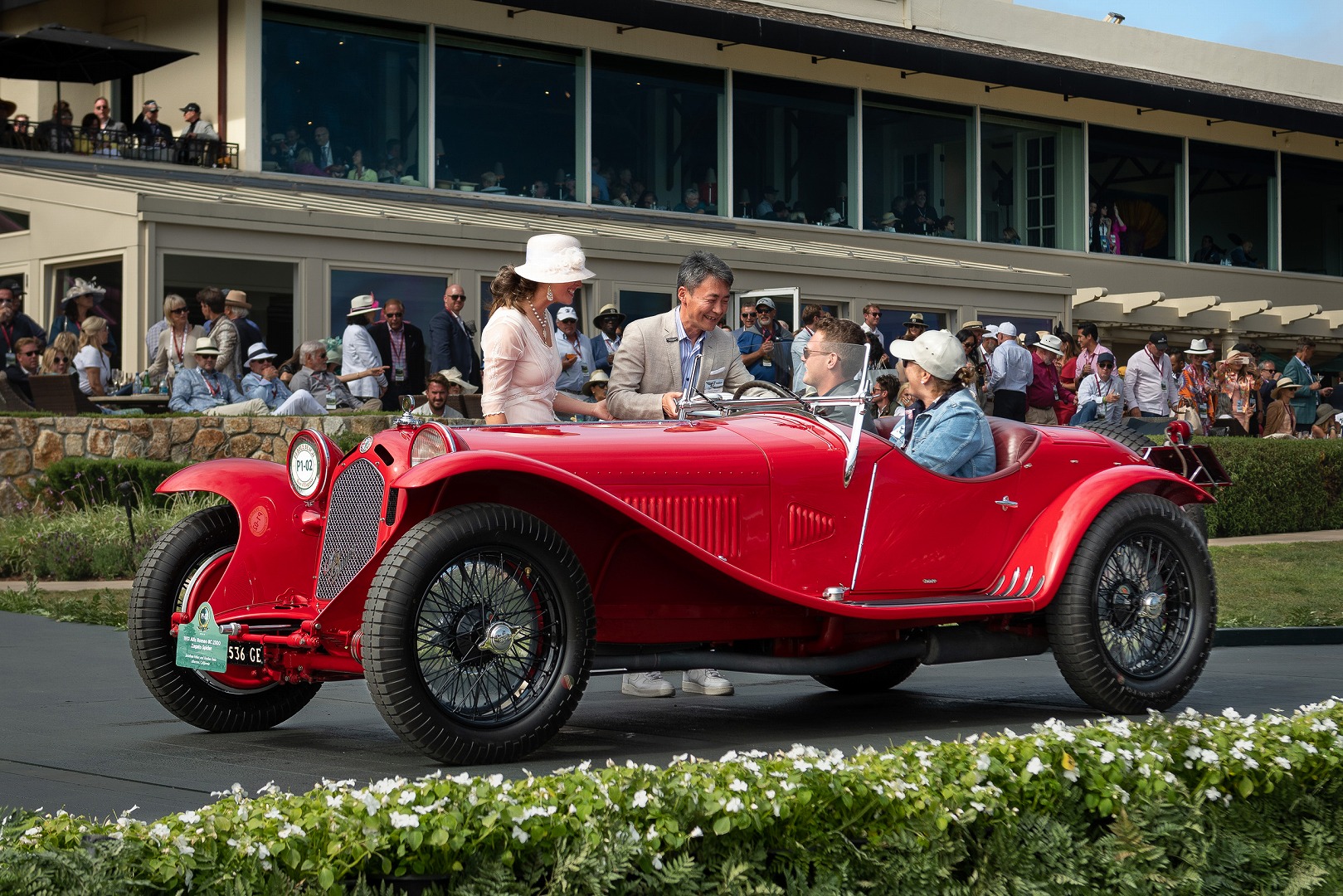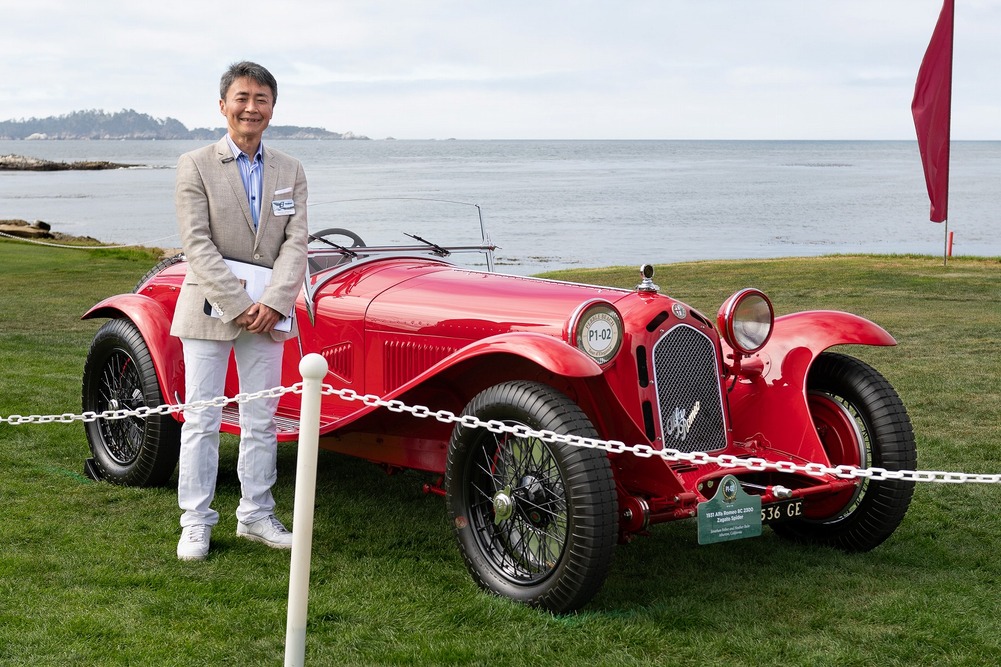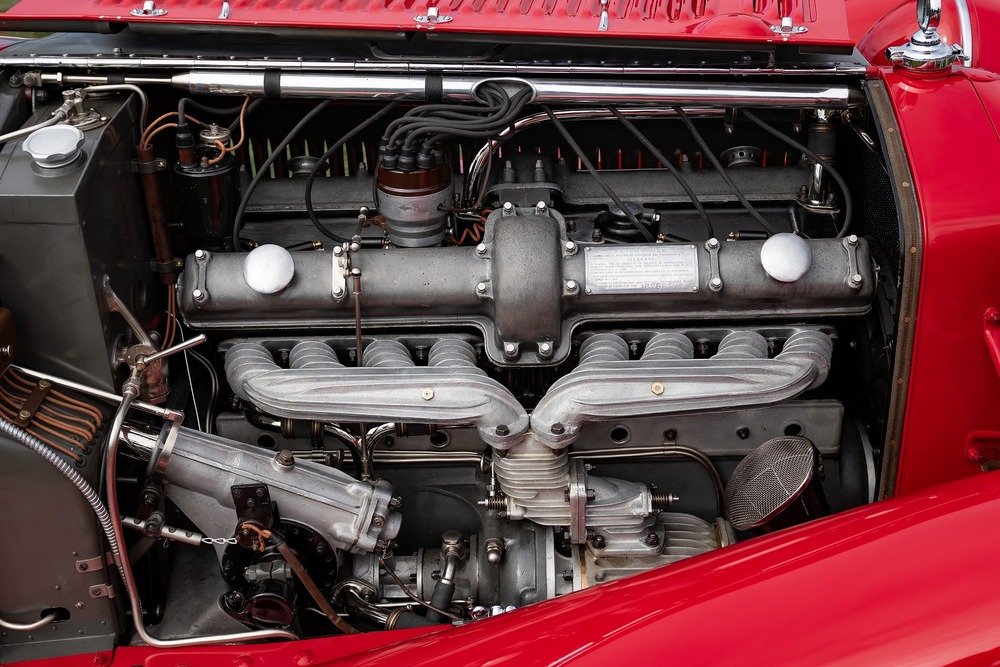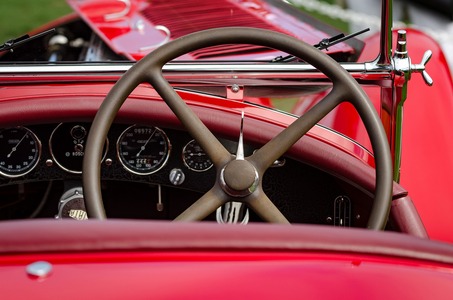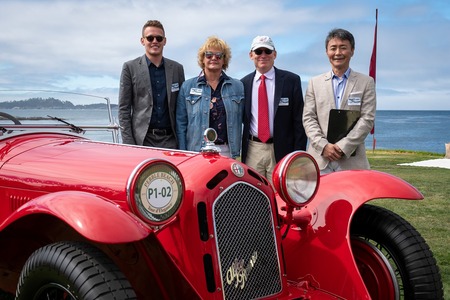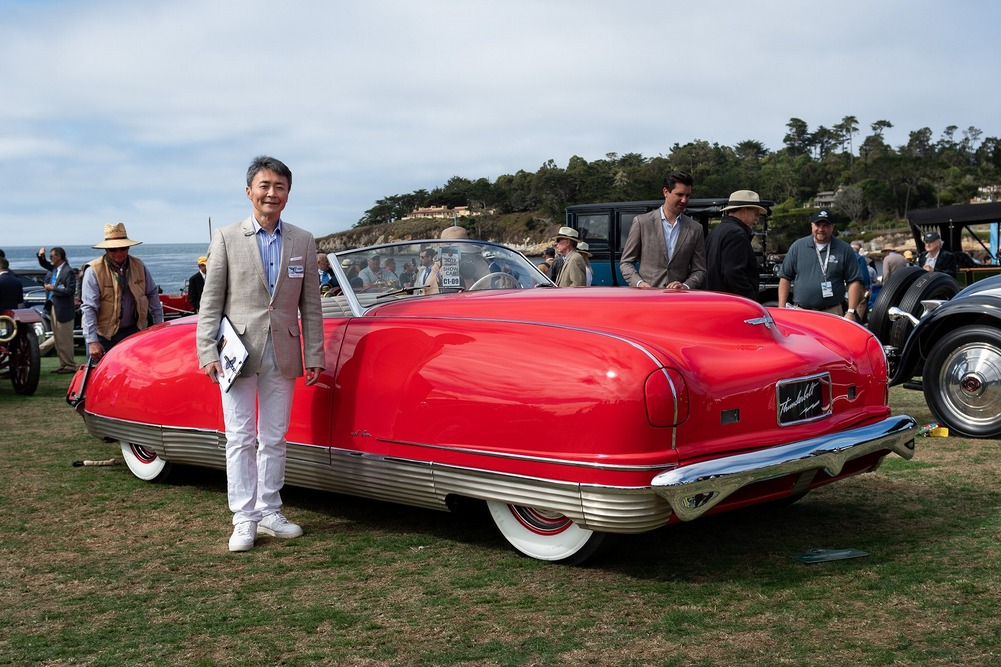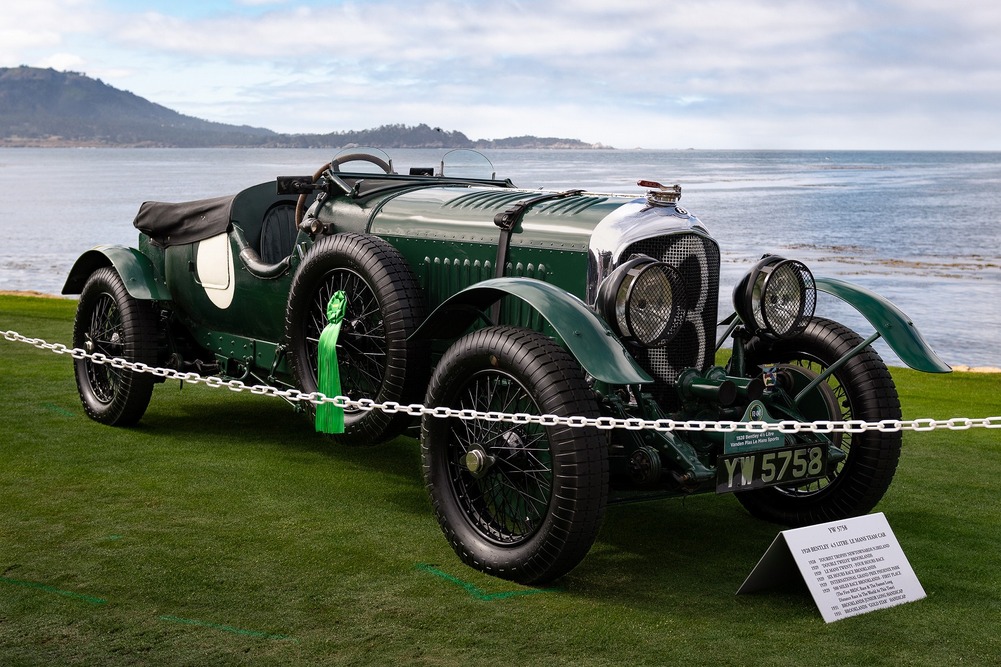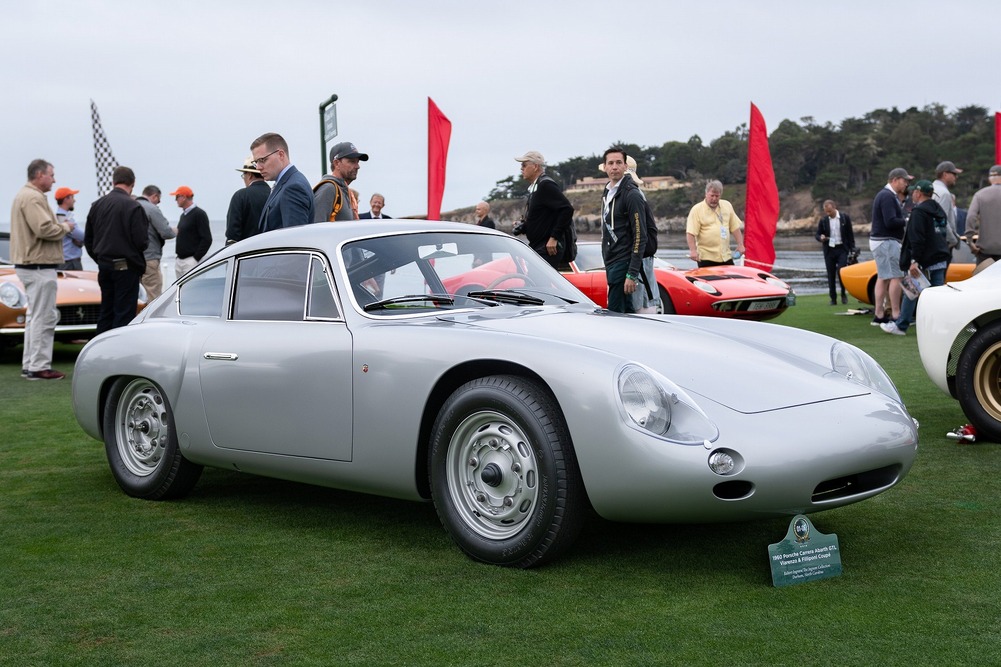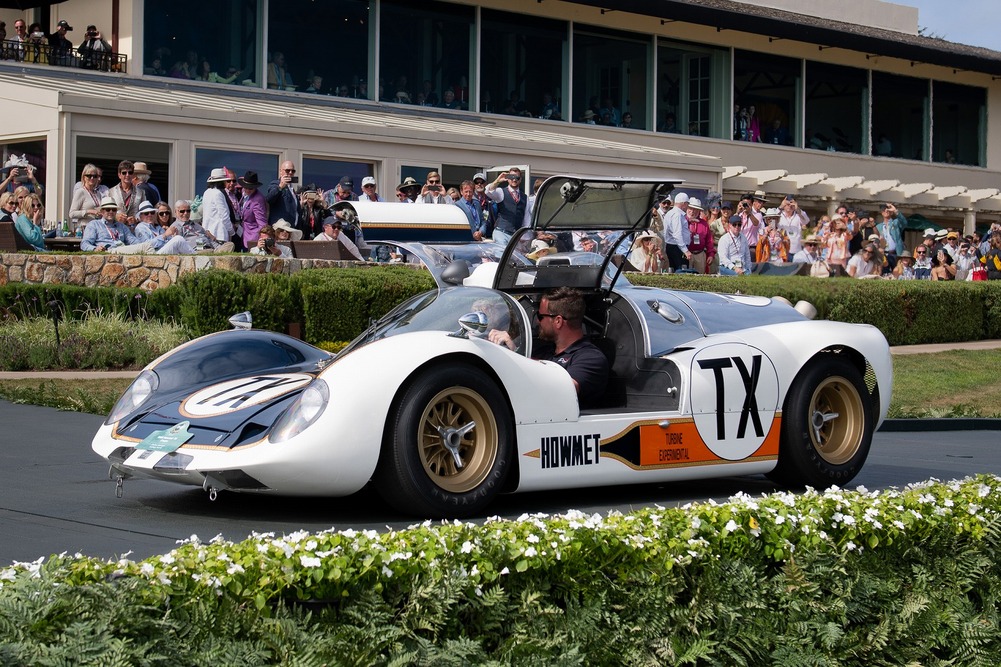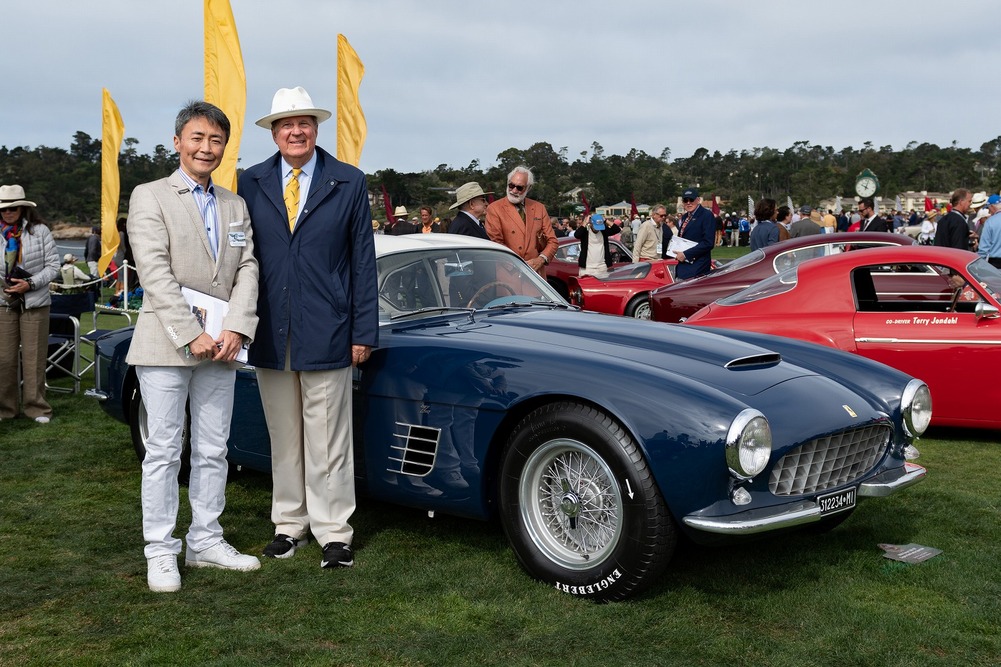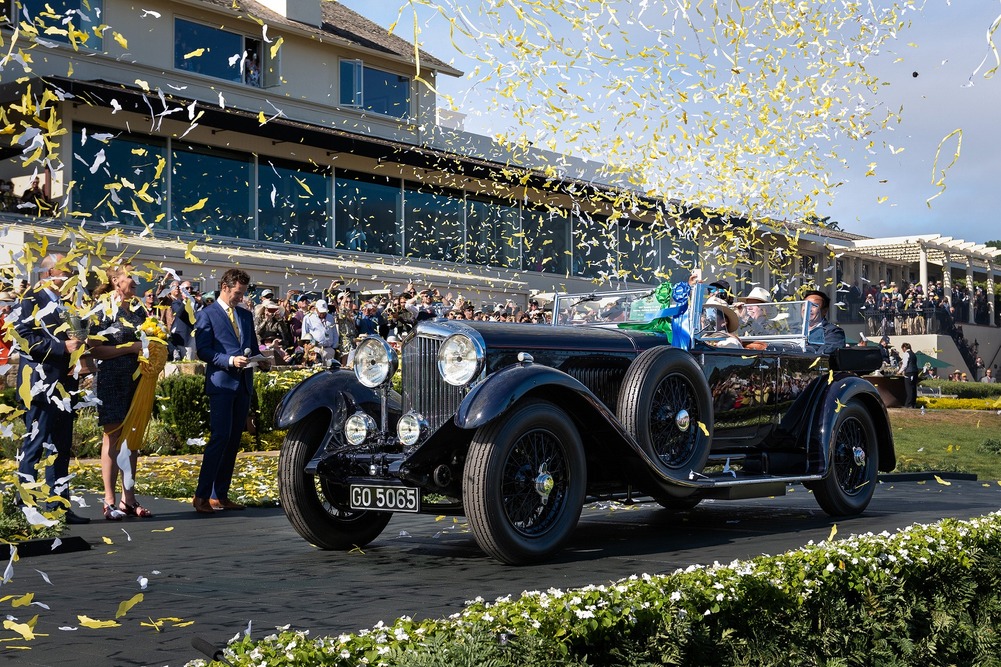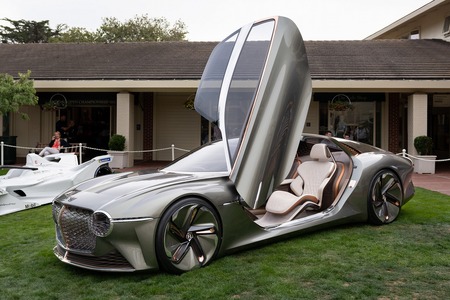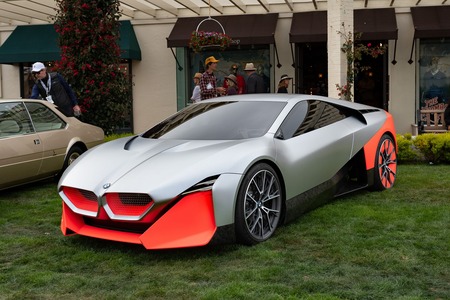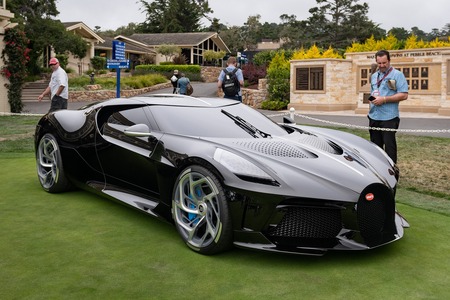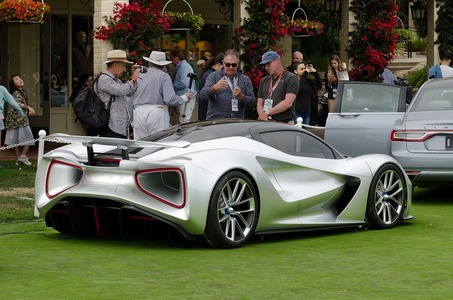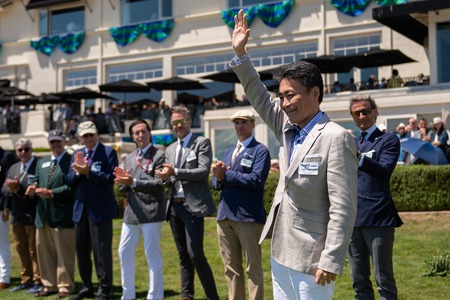A Masterpiece That Took the Racing World by Storm: The Alfa Romeo 8C2300 Wins the Gran Turismo Trophy 2019
PEBBLE BEACH, USA (August 26, 2019) - The prestigious Gran Turismo Trophy at the 68th Pebble Beach Concour d’Elegance went to a strikingly beautiful 1931 Alfa Romeo 8C2300. Gran Turismo creator Kazunori Yamauchi presented the award on the famous 18th hole of the Pebble Beach Golf Links.
Based on the successful 6C racecar, the 8C2300 defined the design signature of the classic marque in the 1930s. By pairing the 6C's chassis with a 2.3-liter inline-8 engine fitted with a lightweight aluminum head, master engineer Vittorio Jano created a machine that would go on to win four consecutive 24 Hours of Le Mans championships between 1931 and 1934, as well as three straight victories in both the Targa Florio and the Mille Miglia. The name of the 6C and 8C referred to their respective number of cylinders, so it should come as no surprise that the 8C delivered much more power than its predecessor, thanks not only to the extra cylinders, but also its dry sump design and a Roots-type supercharger.
An estimated 188 units were produced over four years starting in 1931, with most of the bodies supplied by either Touring or Zagato. The magnificent proportions of this automobile are exemplified by its combination of a long hood, sleek profile and low-slung body.
Here are a few other notable award-winning cars as well as the nominees for this year’s Gran Turismo Trophy.
1941 Chrysler Thunderbolt
The automobile had become a necessary commodity for American people in the 1930s and 1940s, prompting all the car manufacturers to come up with fresh new futuristic designs to capture the imagination and differentiate themselves from the rest of the pack. Many of these "dream cars" came in the form of concept models. Among these fresh creations was the Chrysler Thunderbolt.
Designed by futurist Alex Tremulis who would later pen the famous Tucker sedan, the Thunderbolt did away with the prominent fenders and radiator grille that had served as a Chrysler trademark in its day, but rather focused on technological innovations that included a power-retractable hardtop, retractable lamps and power windows. You can say that this vehicle, despite being a concept, was far ahead of its time.
1928 Bentley 4.5L
When observing the history of the 24 Hours of Le Mans, the one car manufacture to stand out is Bentley, as it won the inaugural 1923 24 Hours of Le Mans and then claiming four straight titles at the famous Sarthe track from 1927 to 1930.
One of the cars that participated in that famous streak was the 4.5L, which won the 1928 contest. This car is notable for its large capacity engine that compensated for its boxy and heavy body. The 4398cc SOHC 4-valve inline-4 produced 110 horsepower. Between 1927 and 1931, as many as 665 units were built, many with the standard Vanden Plas body painted in British Racing Green.
1960 Porsche Carrera GTL
Based on the popular 356 sports car, Porsche created the "Carrera" version solely for racing. While only 60 units were produced, 20 of these were sent to tuning specialist Carlo Abarth in Turin, Italy, where he made further modifications to the chassis and body to reduce weight. Thus, the Carrera GTL was born.
Designed by Franco Scaglione, well known for his streamlined aerodynamic shapes, the Carrera GTL would go on to compete in the 24 Hours of Le Mans from 1960 to 1962 where it claimed three consecutive championships in the 1600cc class. This particular vehicle, delivered to Sweden at the time of sale, retains a high level of original equipment and an amazingly low odometer reading.
1968 Howmet TX
During the 1950s, the idea of replacing reciprocating engines with gas turbine powerplants was a popular notion. Renault, Fiat, Rover and Chrysler, among others, conducted testing with early prototypes, and this Howmet TX is among the rare models that implemented gas turbine technology into a pure racecar.
Leading this project was race driver Ray Heppenstall, who equipped the car's McKee Engineering space frame with two Continental Aviation helicopter turbine engines. Although the Howmet failed to complete the 1968 24-hour endurance races at Daytona, Sebring and Le Mans, it did show promise in a number of sprint races that year.
1956 Ferrari 250GT
Enzo Ferrari had a penchant for 12-cylinder engines, ever since the days he worked for Alfa Romeo before going on to establish his own company. Among the first V-12s he ever created was the Ferrari-Colombo V12, designed by engineer Gioacchino Colombo who left Alfa Romeo to work with Ferrari. And the first car to feature this new engine was the 250GT.
Produced in 1956, most models of the 250GT was designed by Pinin Farina and constructed by Scaglietti; however, Zagato created a limited run of five cars aimed at customers looking for a more radical design. This particular car was the first example of the Zagato-modified model. It features a two-tone color scheme (dark blue metallic and white) that differentiates it from others inside the Ferrari stable.
The Gran Turismo Trophy winning Alfa Romeo 8C2300 is planned to be added to Gran Turismo game in the future. This year’s Pebble Beach Concours d’Elegance Best of Show was awarded to the 1931 Bentley 8 Litre Gurney Nutting Sports Tourer.
(Descriptions provided by Hideo Kodama)

